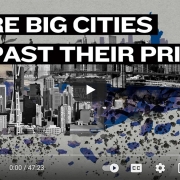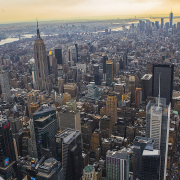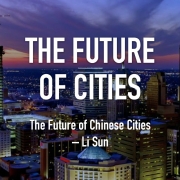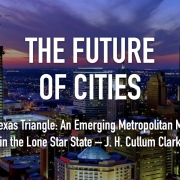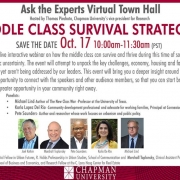Can We Save the Planet, Live Comfortably, and Have Children Too?
The Covid-19 pandemic has brought about what Zillow calls “the great re-shuffling,” as more people head out of major metropolitan areas to work, often remotely, in less dense, even rural areas. The recent surges in urban crime and disorder, in once-placid London and Paris, and once-triumphant New York, San Francisco, and Los Angeles, are likely to make things even tougher for the urban core.
As technology shifts, particularly for white-collar workers, the economic logic behind urban densification and expanded mass transit weakens. Today, nearly 45 percent of the 155 million-strong U.S. labor force is working from home full-time during the pandemic, up from below 6 percent in 2019. When the pandemic ends, this portion will no doubt drop, but experts like Stanford economist Nicholas Bloom suggest that it will remain at least 20 percent of the workforce.
Some 60 percent of U.S. teleworkers, according to Gallup, wish to keep doing so, at least for now. Globally, some 80 percent of workers expressed a desire to work from home at least some of the time. Equally important, many executives believe that this shift will continue, disproportionately affecting our largest, most celebrated business hubs. Both executives and employees have been impressed by surprising gains, and now many companies, banks, and leading tech firms – including Facebook, Salesforce, and Twitter – expect a large proportion of their workforce to continue to do their jobs remotely after the pandemic.
The coming conflict between reality and the green urban agenda
These preferences counter the narrative, so popular with planners and pundits, of the need for greater density and smaller living units in metropolitan areas, amid the expansion of mass transit.
If the densification agenda was weak before, it is almost delusional now. Even before Covid, the largest core-city populations have been stagnant or declining, including fabled American cities like New York, Los Angeles, and Chicago. Nationwide since 2010, 90 percent of major metropolitan-area growth took place in the suburbs and exurbs. Jobs followed this pattern as well before Covid started undermining the economic rationale for high-rise office towers and massive new transit investment.
To be sure, some industries may choose to concentrate in the core by preference or tradition, and certain groups, largely the childless and the super-affluent, may remain in the urban playground for reasons of culture, social contacts, or easy access to international airports. But with the rise of remote work, most are likely to labor at home or nearby. They will travel less; upward of 33 percent of all business travel, critical to the health of many inner-city economies, could be permanently lost, as people opt for remote meetings and training sessions.
Read the rest of this piece at Real Clear Energy.
Joel Kotkin is the author of The Coming of Neo-Feudalism: A Warning to the Global Middle Class. He is the Presidential Fellow in Urban Futures at Chapman University and Executive Director for Urban Reform Institute. Learn more at joelkotkin.com and follow him on Twitter @joelkotkin.
Wendell Cox is principal of Demographia, an international public policy firm located in the St. Louis metropolitan area. He is a founding senior fellow at the Urban Reform Institute, Houston and a member of the Advisory Board of the Center for Demographics and Policy at Chapman University in Orange, California. He has served as a visiting professor at the Conservatoire National des Arts et Metiers in Paris. His principal interests are economics, poverty alleviation, demographics, urban policy and transport. He is co-author of the annual Demographia International Housing Affordability Survey and author of Demographia World Urban Areas.
Photo credit: Frantik via Wikimedia under CC 3.0 License.


